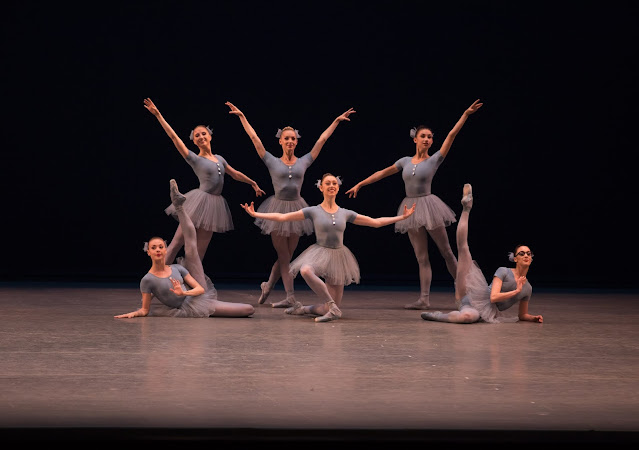 |
| American Utopia. Photo: Matthew Murphy |
There’s no better season than fall in New York. Upstate, the evolving, brilliant outdoor theater of the trees and mountains after the verdant lushness of summer. In the city, the torrent of culture that all seems to happen in October. This year, things in NYC have moved closer to normal, with regular capacities at theaters, restaurants, and museums. New Yorkers have gotten used to masking up inside, and showing proof of vax-plus-ID everywhere. Just more layers necessary to access the fruits the city has to offer.
Nothing better represents the joy of returning to near-normal life than David Byrne and his Broadway show, American Utopia (reviewed here in 2020). It celebrates Byrne’s music, framed by Annie-B Parson’s movement, in the purest form, featuring only the incredibly talented cast onstage with no props other than instruments and a metal beaded curtain. Byrne himself, in his late 60s, is seemingly ageless, showing no signs of fatigue or being winded, even after belting out one of his many timeless hits. He has put forth his ideals not only by speaking or singing them, but by example. How many rock stars ride their bikes everywhere, mixing with the public at large with a friendly demeanor? The show has moved to the St. James Theatre, and retains the hypnotic kinetic invention of Parson, with marching patterns and simple moves and gestures done by musicians and the two dancers alike dressed in dapper grey suits. And Byrne, of course, barefoot, bolstered by devoted audiences.
 |
| João Menegussi and Calvin Royal III in Touché |
American Ballet Theater’s ABT Rise initiative shows its full-out commitment to diversity, equity, and inclusion. Their program contains a “Land Acknowledgment” statement, stating that they perform on land stolen from Indigenous peoples. I attended the Oct 22 performance at the Koch, one dedicated to the LGBTQIA+ community. The mixed rep program contained many traditional-feeling works—Alex Ratmansky’s showcase of young technical virtuosity and exuberance, Bernstein in a Bubble; Clark Tippett’s Some Assembly Required, a largely quiet psychological drama danced by newly promoted Skylar Brandt (who dazzled in the Bernstein, at one point pirouetting what must have been six revolutions) and charismatic Gabe Stone Shayer in a toned-down role; and Indestructible Light by Darrell Grand Moultrie, an entertaining, jazzy crowd-pleaser full of maxed out moves and poses. It also showcased Touché by Christopher Rudd featuring Calvin Royal III and João Menegussi, who underwent a mutual coming-out told through increasingly intimate movement and garments shed.
The company is undergoing a seismic leadership change with both the artistic director and executive director departing, in addition to the shift toward diversity which is so urgent at most organizations now. How it deals with its core programming—full-length ballets, many centuries old, with politically incorrect themes, motifs, and actions—will unfold in the coming seasons, beginning with next year’s presumably shorter-than-usual run at the Met Opera House. Its concurrent contemporary choreographic commissions have run the gamut (I missed the Jessica Lang suite to Tony Bennett) which, from its sheer breadth, will likely produce hits and misses. Will there be a larger shift in the spring/summer season from centuries-old chestnuts to contemporary work? We’ll see.
 |
| Charmion von Wiegand, Untitled, 1942 |
While I’m sure it wasn’t meant this way, the sheer physical relationship at the Whitney Museum between Mind/Mirror, the mega Jasper Johns half-retrospective on 5 (the balance is at the Philadelphia Museum) and the keen survey, Labyrinth of Forms: Women and Abstraction, 1930–1950, occupying the 3rd floor small gallery speaks volumes—iconic white male artist physically dominating the building while the women are exiled to a space adjacent to the restrooms. The latter exhibition comprises works from the Whitney’s collection, most of who are unfamiliar names. Work by Barbara Olmsted and Dorothy Dehner sits alongside those by Lee Krasner and Louise Nevelson. It’s a thrill to “discover” so many women who worked in abstraction during a time that preferred realism, at times organizing to support one another. The taut show was organized by Sarah Humphreville, Senior Curatorial Assistant.
Unsurprisingly, the Johns show contains many of his landmark works—flags, maps, coffee cans. The Whitney has many of Johns’ 1980s-90s pieces, which evoke stasis and marking time. Some of Johns’ works which struck me most strongly are actually his more recent ones, black & white ink on plastic (Matthew Marks Gallery had a show including many of these.) Perhaps because Johns, now in his 90s, has worked constantly for most of his life, producing an enormous body of work tracing so many subgenres, it is easy to take him for granted. But his influence is incalculable even if he and his male counterparts may have hoarded due attention to their female peers.
 |
| Shirazeh Houshiary, Pupa, 2014 |






